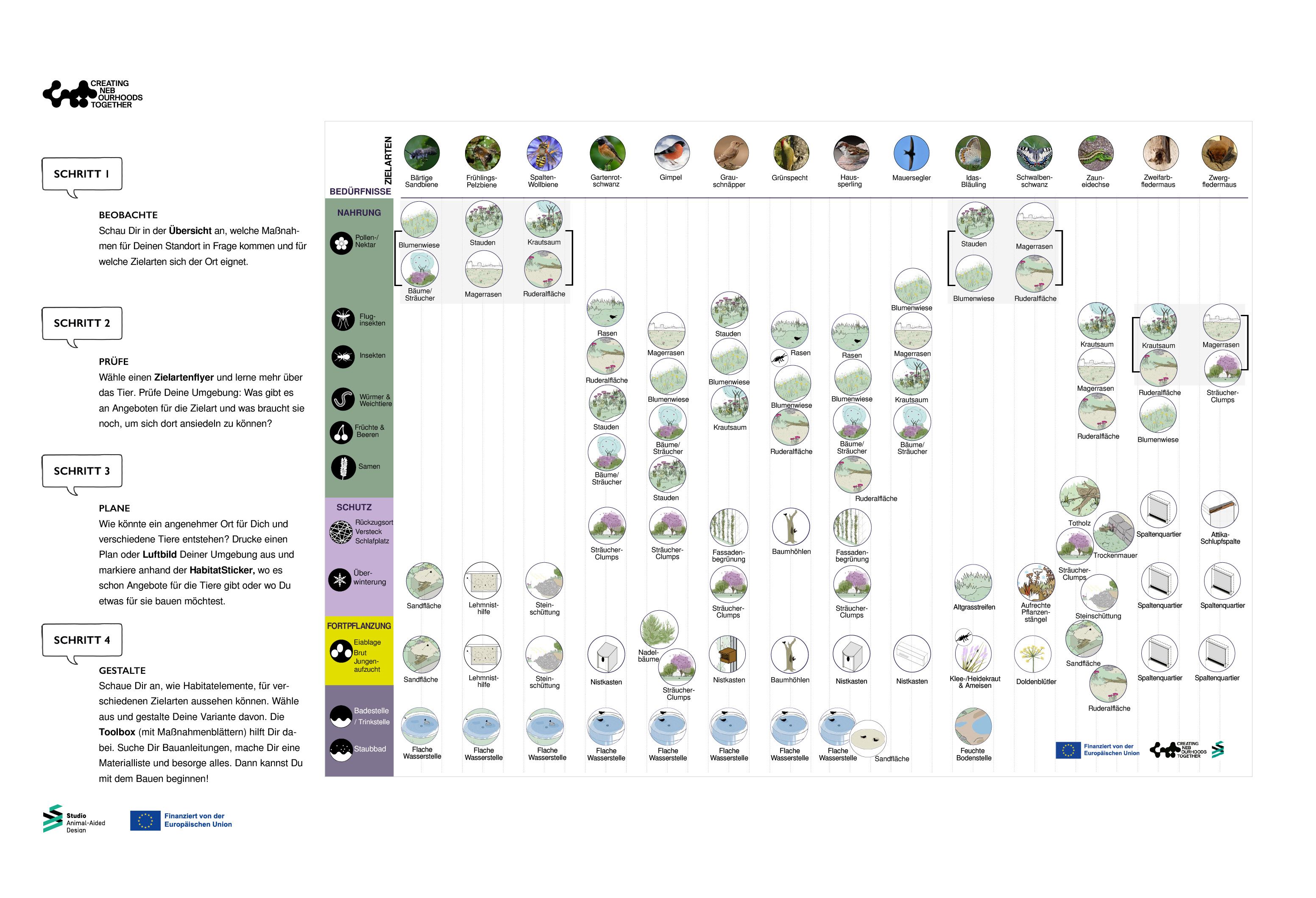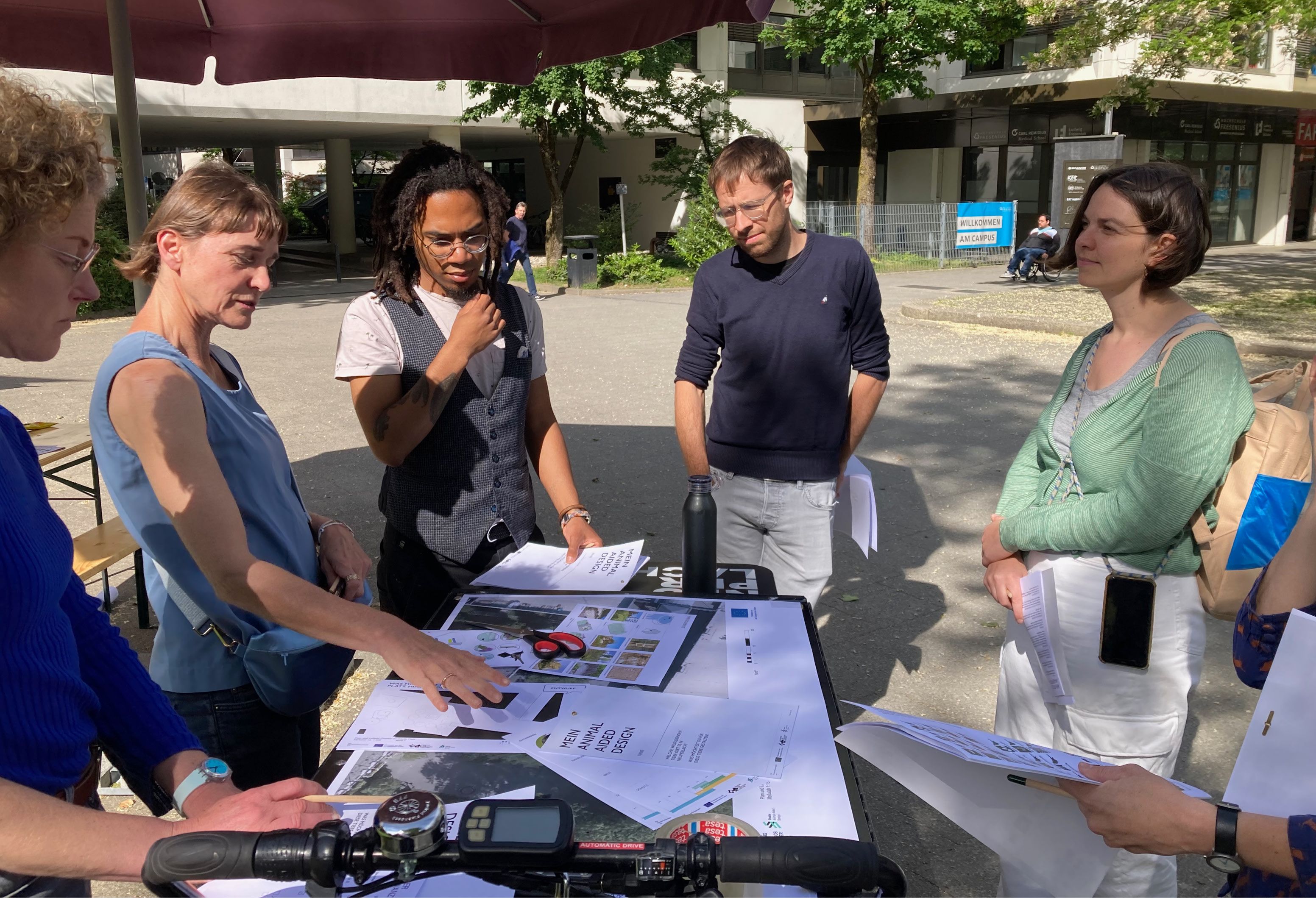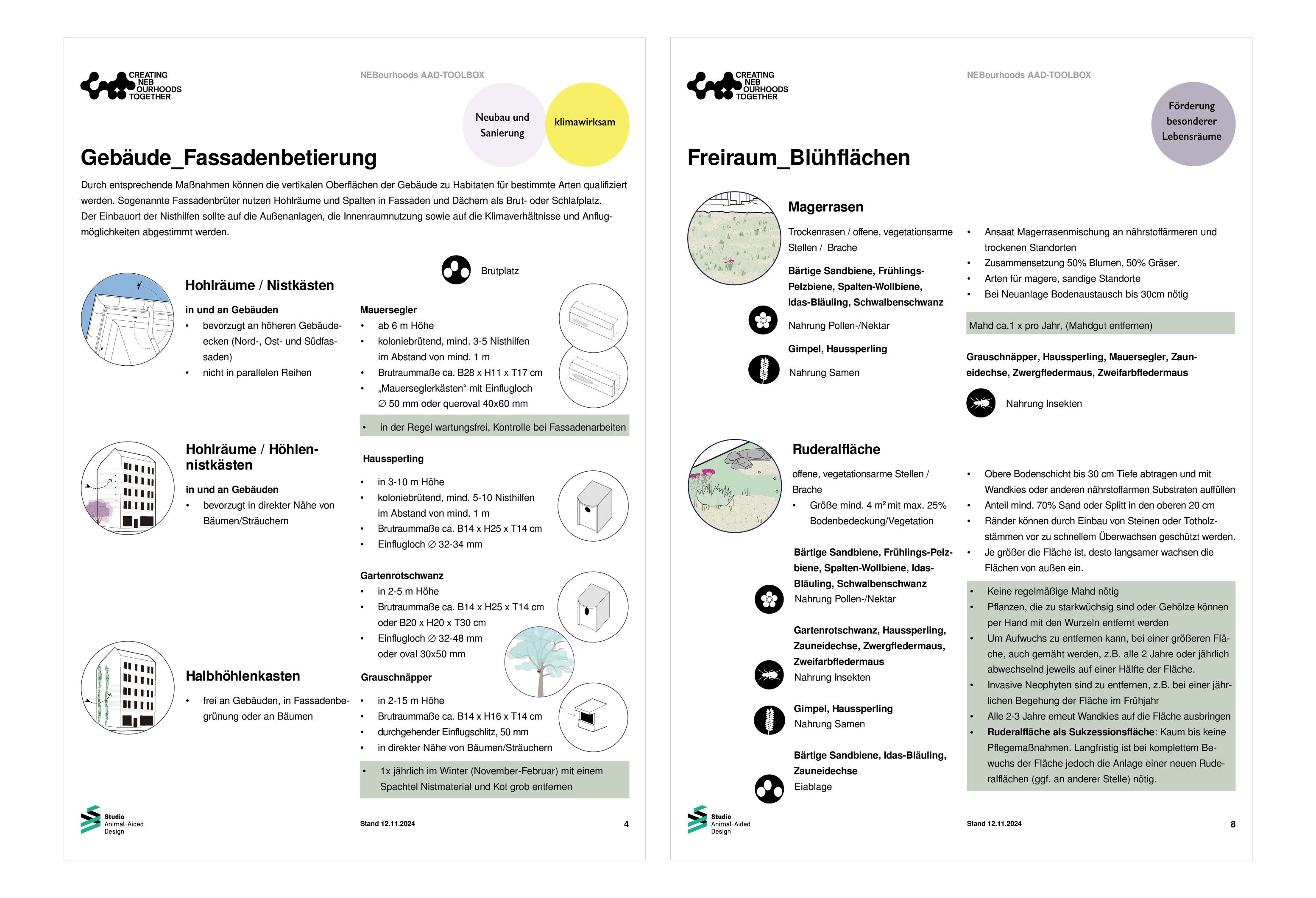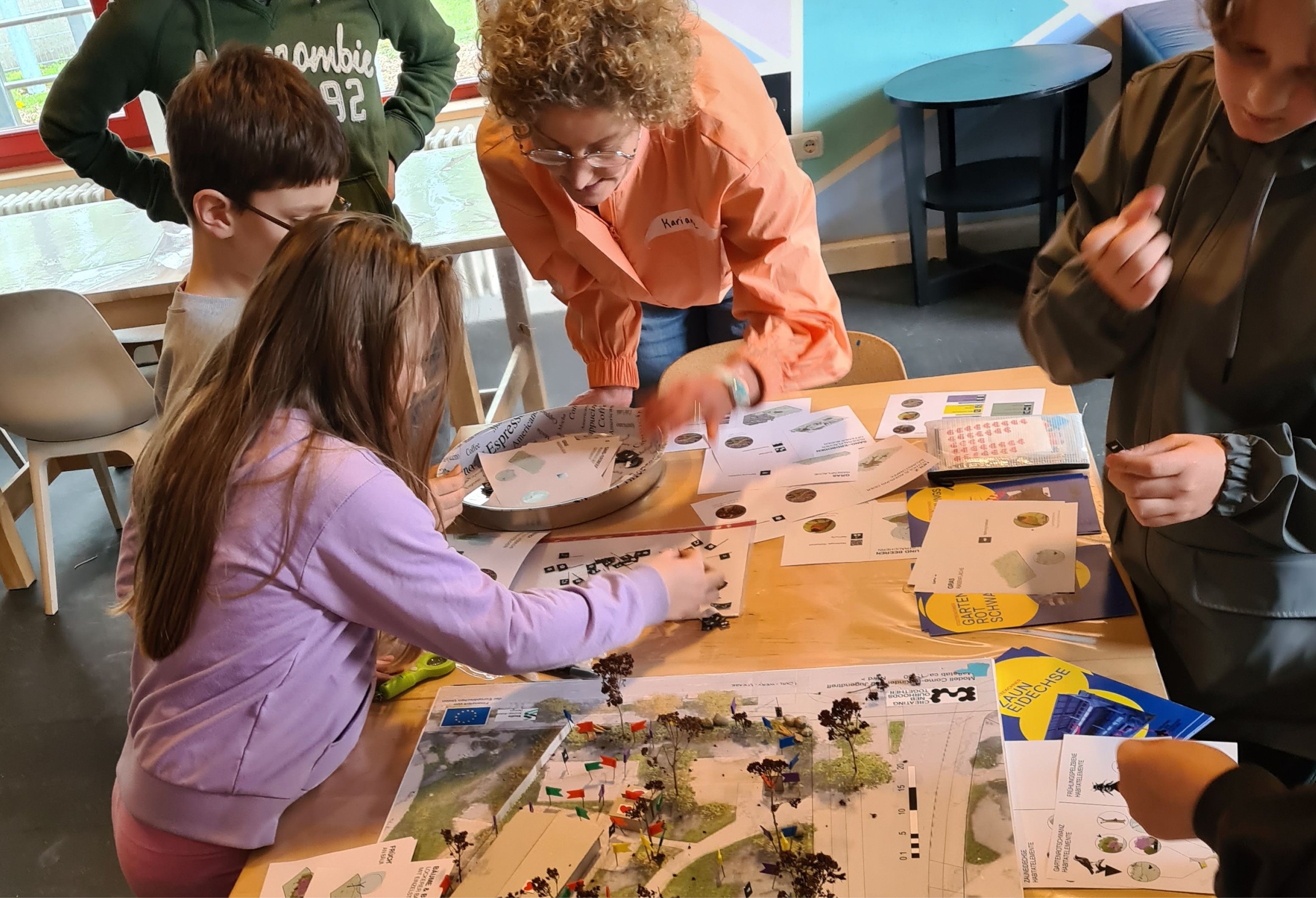Your Animal-Aided Design: Animal-Aided Design TOOLBOX for co-creative application
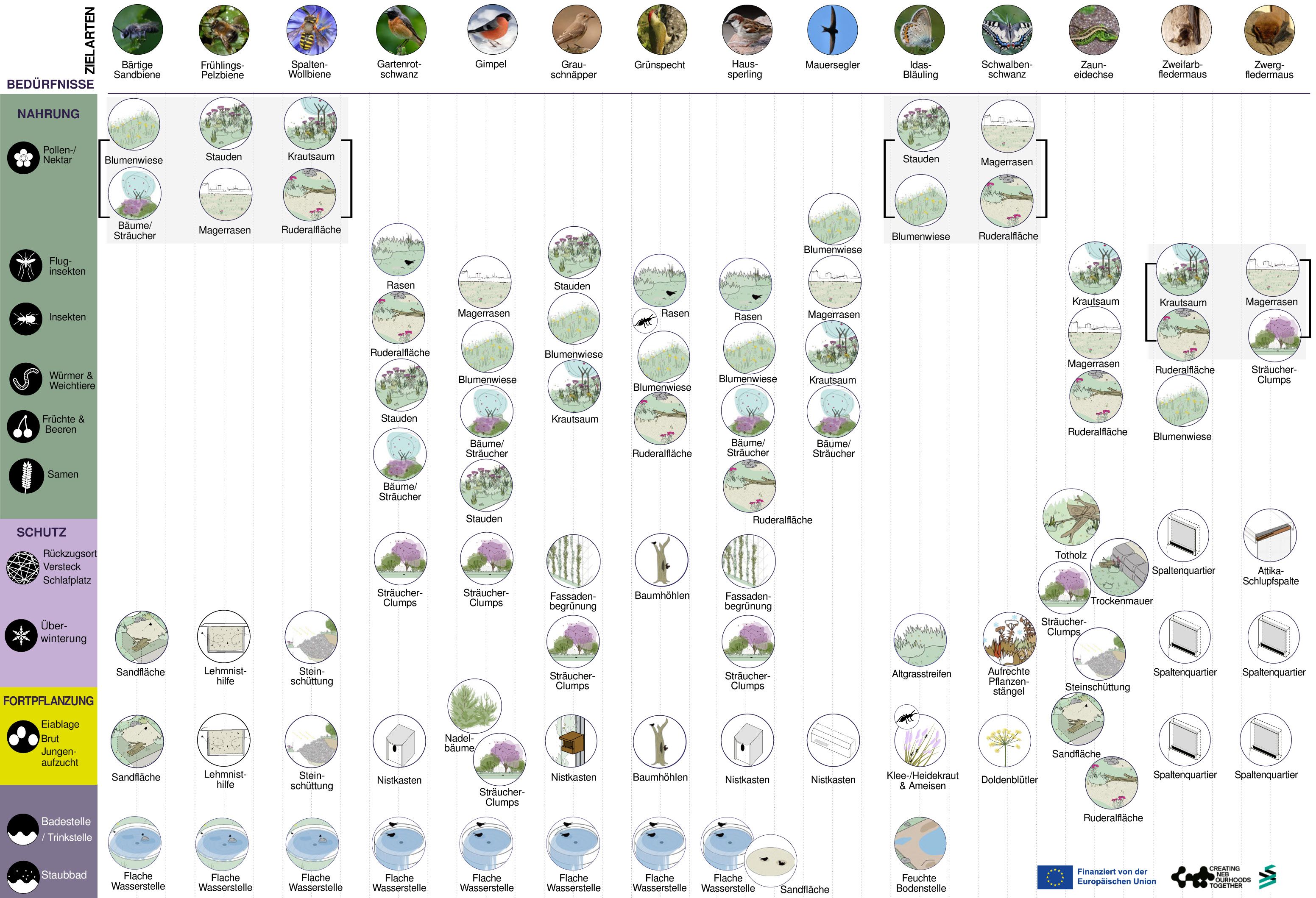
An important aspect of the transformation of our urban realm with the method Animal-Aided Design (AAD) is the creation of places for encountering wildlife. Residents should not only have the opportunity to experience nature in the species-rich surroundings, but also in the centre of the district.
The Animal-Aided Design TOOLBOX is intended to support the realisation of your own wildlife-friendly project. It is designed for participatory and co-creative work and can be used by housing companies, property developers and planners. However, it can also be used in schools, social institutions or at municipal (administrative) level.
Download Animal-Aided Design TOOLBOX (DE):
Measures Overview
Handbook "Toolbox"
Overview Target Species Neuperlach
Target Species Flyer
Habitat Stickers
Measure Sheets
© AAD-Toolbox: NEBourhoods / Studio Animal-Aided Design
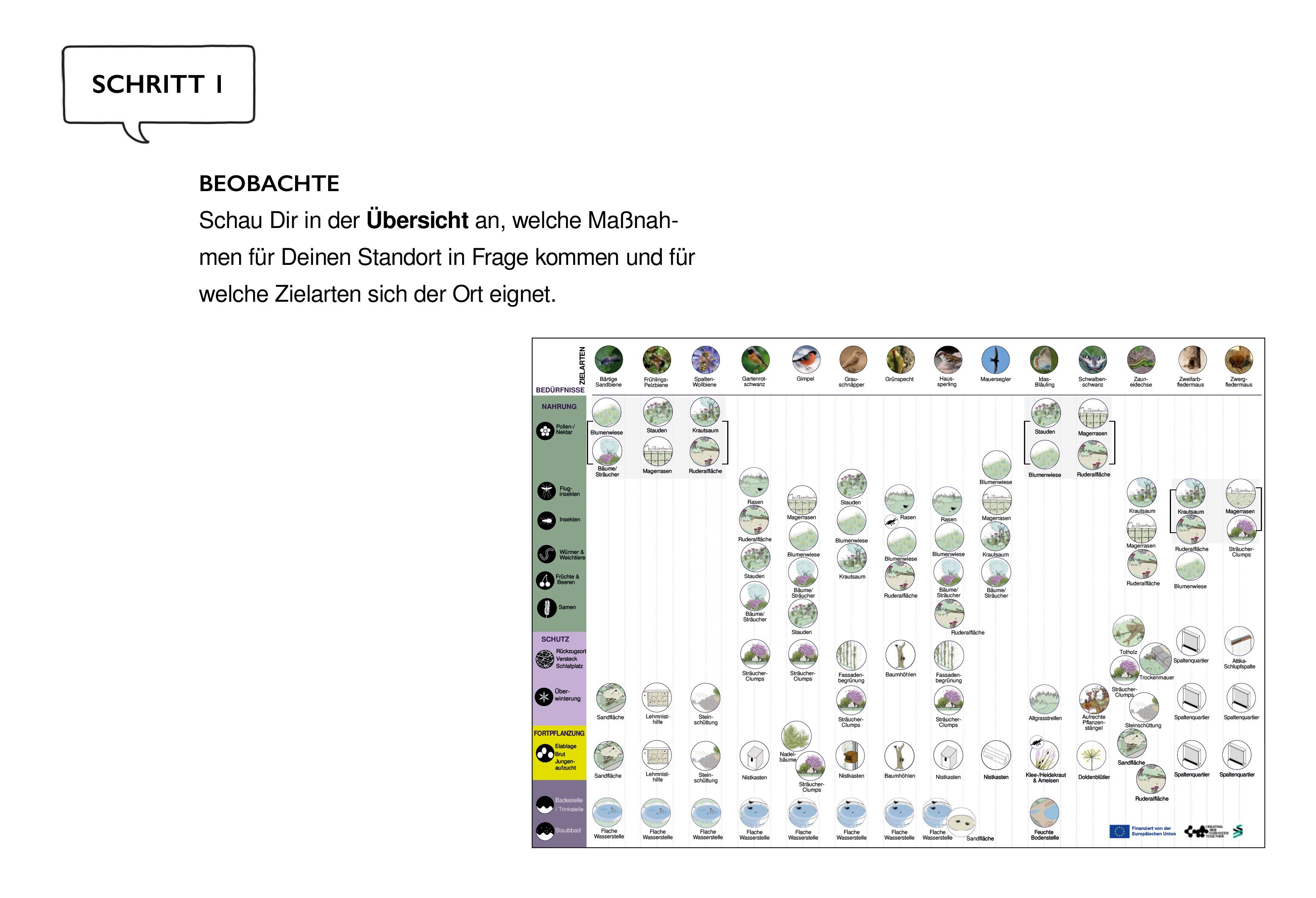
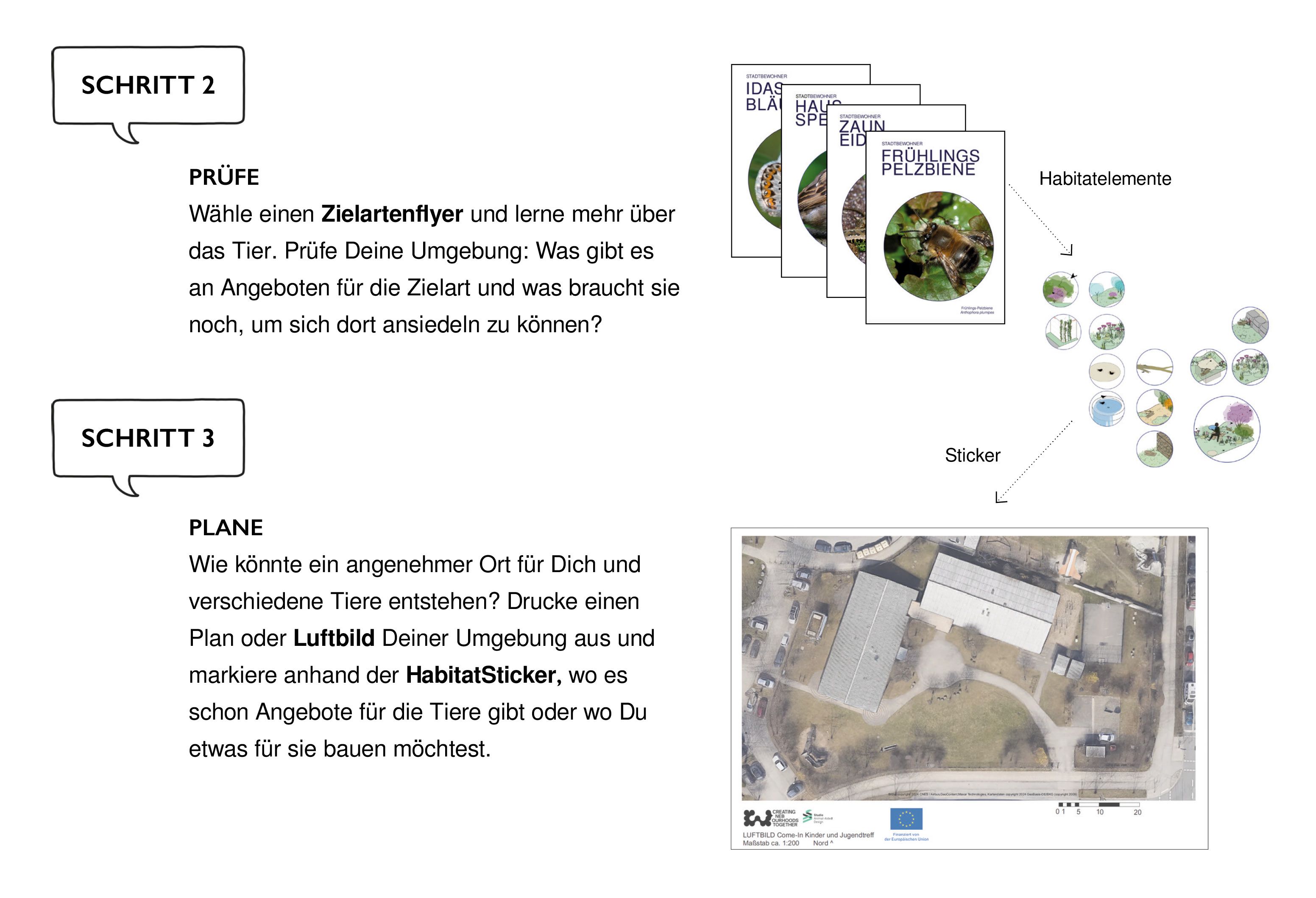
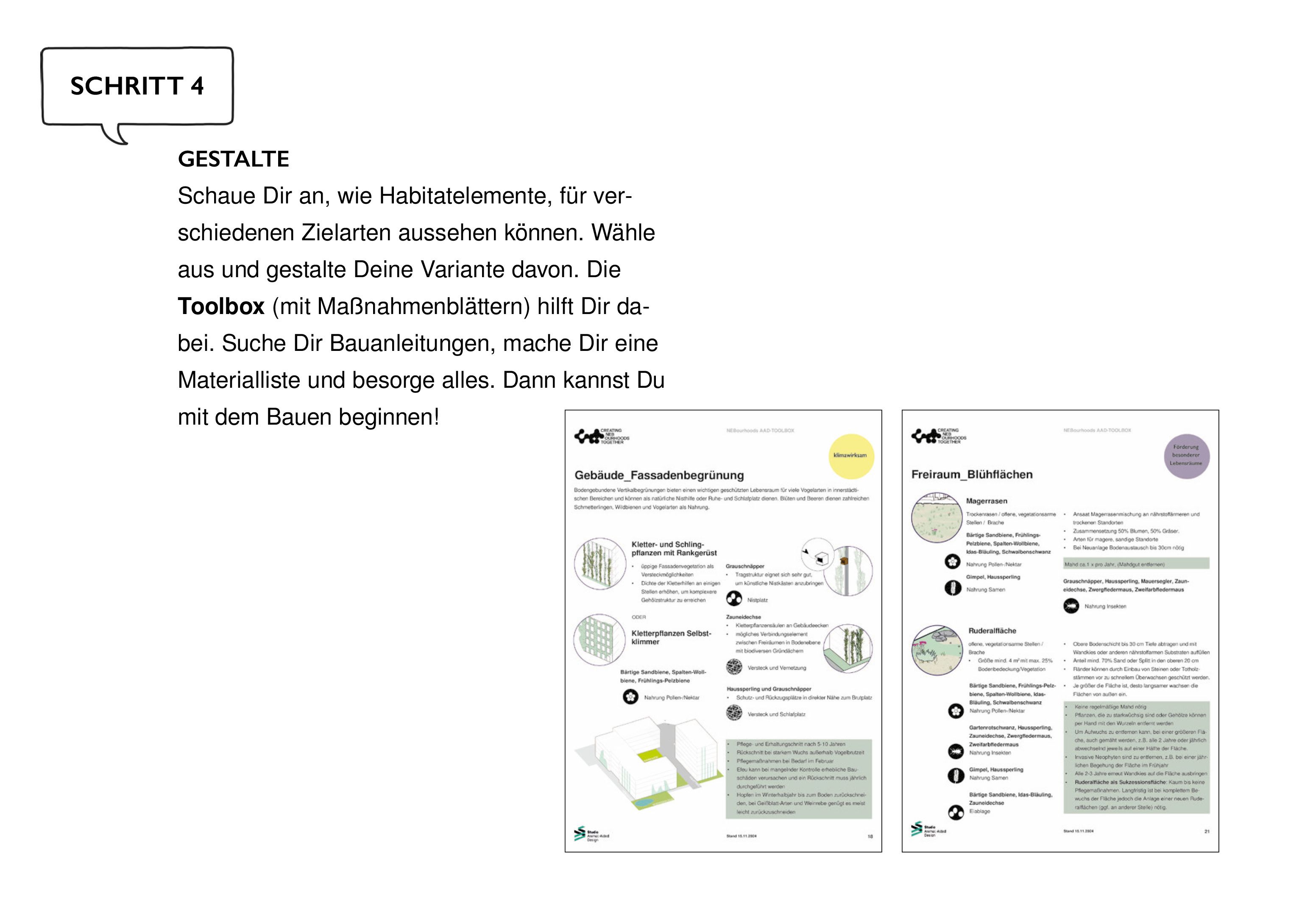



Using the AAD-Toolbox with Neuperlach as an example
From the 14 target species selected for Neuperlach, the most suitable should be chosen depending on the location. The Measures Overview illustrates the target species and their needs according to: Food, shelter and reproduction. The overview provides an initial orientation and can serve as a decision-making aid at the beginning of a planning process.
This is then followed by an analysis of the specifics of a site and the potential project. It is important to assess early on whether and which habitats already exist or can easily be created. It should also be considered whether the species in question can migrate into the area independently. Small, ground moving animals in particular, such as the sand lizard, are dependent on structurally rich migration corridors. The Target Species Flyer provide information on the individual animal species and enable a specific location analysis. A checklist is used to analyse the site: What is already available for the target species and what is needed in addition for it to be able to colonise the site? The habitat elements presented there are the ‘critical site factors’ and form the basis for planning measures on site. In line with the Animal-Aided Design principle, all the needs of an animal species should be met on the project site throughout its entire life cycle. This means, for example, planning nectar-rich plants for butterflies, as well as the right feeding plants for their caterpillars.
The next step is to further explore: How could a pleasant place for people and animals be created? The HabitatStickers serve as a co-creative analysis and design tool for working on a specific location. You can mark them on a map or aerial photograph where there are already facilities for the animals and where new habitat elements should be placed.
The compact Measure Sheets present individual habitat elements and their respective functions and benefits for various target species and provide information on size, layout/construction and maintenance. Each group of measures is assigned to the spatial units: building, open space or (green) roof. With the help of these measure sheets, new designs can be developed and the implementation planned. Choose and design your version!
The summarised information on the individual target species and habitat elements can be found in the AAD Database for the Toolbox.
Although the AAD-Toolbox was originally designed for use in Neuperlach, it offers a flexible framework that can be adapted for individual projects, after the area analysis phase and the selection of target species. The elements were developed together with Sarah Dorkenwald (NEBourhoods Pool of Creatives), Peter Brooren (NEBourhoods Transition Hub) and Karianne Fogelberg (UnDesignUnit). Their applicability was tested during a workshop at MCBW, in the Living Lab with children and young people, as well as employees of a youth centre and another workshop with kids.
Thanks to all who contributed!
The Nesting Stool is here to stay!
The ‘Creating NEBourhoods Together’ project is coming to an end, but the Nesting Stool will remain in its popular location at the pep. Cosy seating and lounging decks are arranged around planters with native trees and shrubs, flowering perennials and edible plants. Numerous shrubs are now in bloom in spring, and in summer currants and juneberries can be harvested directly. Lavender not only attracts wild bees and butterflies, but also gives the area a special atmosphere of relaxation and recreation for people. The structure is complemented by woven sunshades, which provide pleasant shady spots on hot days. The structure also integrates nesting aids for birds. The Nesting Stool promotes experience of urban nature by encouraging encounters and offering both people and animals a place where they can feel at home. The prototypical modular wooden structure can be dismantled and relocated if necessary.
In the spirit of the NEBourhoods project, further use that promotes the common good and biodiversity is expressly desired! The Nesting Stool can, for example, be used as a meeting point for local initiatives, guided tours on biodiversity or as a ‘green classroom’.
Thanks to the pep management for providing the space!
About Animal-Aided Design
Animal-Aided Design incorporates the needs of wild animals into the design of our cities and open spaces. AAD is a method that harmonises the protection and promotion of wild animals with urban planning at a local level. The aim of the “Creating NEBourhoods Together” project is to impart ecological knowledge, not only to urban planners, architects and landscape architects, but also to local stakeholders in Neuperlach and beyond. The inherent idea of AAD is to incorporate the presence of animals from the start, so that the needs of animal species become integral for the planning process. Animal-Aided Design can serve as inspiration for the development of measures for new projects or for the renovation and regeneration of buildings and (public) open spaces. It can also be used to optimise the maintenance of buildings and green spaces with the aim of promoting the presence of wildlife.
Authors: Christine Jakoby, Thomas E. Hauck / Studio Animal-Aided Design
Picture Credits: NEBourhoods / Christine Jakoby, Peter Brooren
